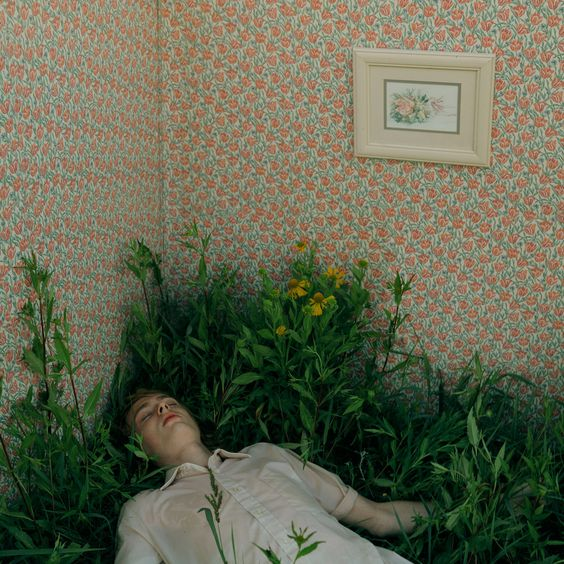
The visual artifact is an image captured by Kyle Thompson, a surrealist photographer who favors abandoned houses and empty forests as subjects of his work (“Biography”). This photo, titled “Remission”, is part of a larger series of stills called “Ghost Town.” Remission is a term commonly used in medicine, and it refers to the reduction of symptoms of disease; the photograph displays a receding of the artificial as nature grows wildly and reclaims a man-made space. Through the title, composition, and juxtaposition of man-made versus natural elements, Thompson implies that modernity and the technological advancements of humanity are a disease that has infected nature. Thompson shows a world where nature is no longer clean-cut to fit around concrete landscapes, where it instead takes precedence and pushes itself back into the foreground: it is a glimpse into an arcadia. “Remission” can be interpreted as a critique on humanity’s environmentally damaging practices, ultimately promoting a reconnection and return to nature.
The unexpected intermingling of indoor and outdoor elements is what first captivated me about this image. The model and the framed painting occupy respective thirds in the composition of the photograph, but there is also a horizontal split across the middle of the photo, a distinct separation of elements. The wall and the plants reside in opposing halves of the photograph, and while the plants begin to climb up the walls, that is the extent of the overlap; the two are not assimilated. The choice to maintain this separation between the two elements in the photo highlights the separation of man and nature in our current reality, but it is also a role reversal where nature is pushing back instead of diminishing from humanity’s influence. Furthermore, it is notable that the wallpaper and framed painting all depict flowers. Pasted flatly against the wall while real flowers stretch out from below, the tacky decor is clearly little more than a cheap imitation of the real thing.
The model lays atop the bed of plants with a calm expression. The warm tones of the photo’s color palette create a tranquil mood, which enforces the notion that the person is sleeping peacefully amongst the flowers. Their shirt is clean and white, a color often symbolically associated with purity, innocence, and simplicity. Through the placement and posing of the model, Thompson presents a world where humans and nature coexist harmoniously, where the titular “remission” of man-made elements is actually beneficial to the human. Half of the model’s body is cropped out, which alludes to the idea that there is even more of nature to be seen and explored outside the bounds of the photo’s frame. Conversely, the repeated pattern of flowers on the wallpaper is monotonous and predictable, and one could imagine that it stretches to an imaginary ceiling and simply stops, boxed within the limitations of its man-made environment.
A song I feel pairs well with the photograph is Spinning by Elan Noon. The hushed vocals and repetitive melody produce a lullaby effect that matches the ambience of the photograph with its sleeping model. The lyrics are also very fitting: “There’s no knowing if the world you’re living in is bursting at the seams.” In conjunction with the photo, these lyrics can be doubly interpreted as either the model’s unawareness that their home is “bursting” as plants invade the unnatural space, or they can be viewed from the thematic, environmentalist perspective in which humanity is gradually pushing earth to its limits through unsustainable practices until it is “bursting at the seams.” The song feels mostly peaceful, but it speaks of a potentially doomed world, and the subtle, shrill strings at the end introduce a sense of tension and unease. When listening to the song simultaneously to viewing the photo, there is an added sense of finality and truth imbued in the message that the image attempts to convey. I could imagine the photograph as the ending scene of a film, with this song playing right before the credits roll: the character accepts whatever has happened to their world, and slowly lays down upon the grass to rest.
Works Cited
-
“Biography.” Kyle Thompson, http://www.kylethompsonphotography.com/biography.
-
“Elan Noon - Spinning.” YouTube, YouTube, 22 July 2020, https://www.youtube.com/watch?v=ZllURBCgaVs.